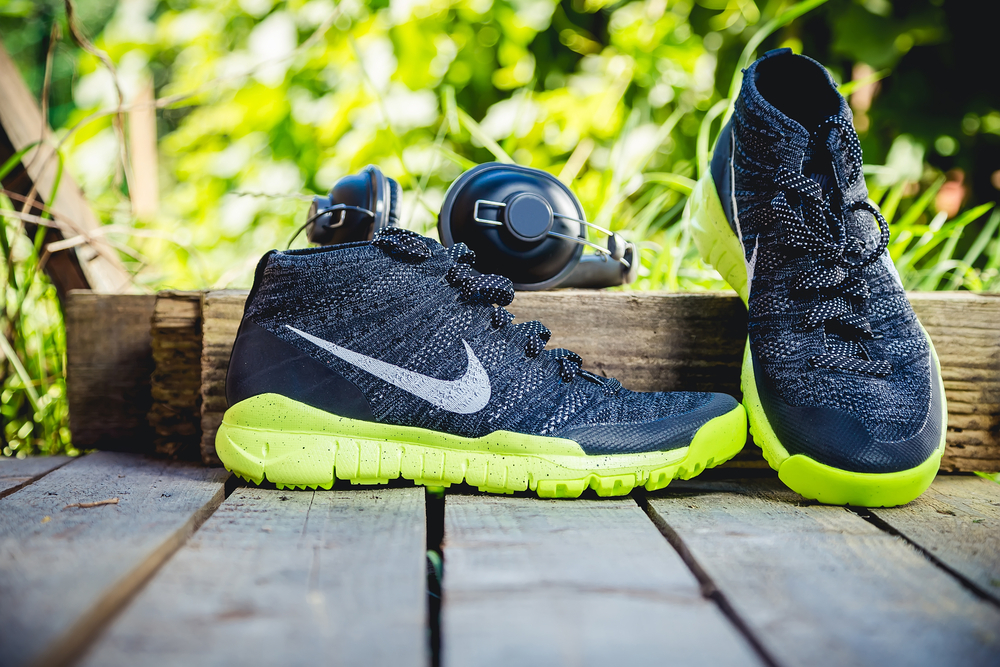Did you know that about 25 billion shoes are manufactured every year (Source)? If there are seven billion people in the world now, this means that each one of us is buying about three pairs of shoes every year. Some estimates show that around 95% of these shoes will end up in landfill (Source). This leads to an important question: How can the shoe industry assist in preserving the environment?
Footwear manufacturers are growing more aware of the benefits of aligning with sustainable methods of production. Good brand imaging, ecological benefits, and benefits to consumers are some of the upsides to exploiting the sustainable footwear market.
This article explores the sustainable footwear market. We look at the shoe market statistics in general and sustainable footwear in particular. We look at how consumers can still enjoy the leather shoes they are used to as manufacturers embrace more sustainable production methods that focus on environmental protection and saving energy.
Sustainable footwear can only be achieved if both the manufactures and consumers work together. Thus, we end this article by looking at some tips on what you can do with your shoes when you think they have reached their end of life.
What is Sustainable Footwear?
The Footwear Distributors & Retailers of America (FDRA) defines sustainability in the footwear industry as “shoe design, development, manufacturing, distribution, and selling processes that minimize negative environmental impacts, conserve energy and natural resources, are safe for employees, communities, and consumers, and are economically sound” (Source).
From the definition of sustainable footwear above, it is clear that sustainability is not something that happens at a single point in the process. It involves the manner in which the raw materials are sourced, how they are transported, and the process of manufacturing. Added to this, it looks at where the shoes go when they are no longer useful.
Towards Sustainable Footwear

Sustainable footwear is becoming a serious business. The research consultancy, Grandview Research, reports that “the global sustainable footwear market size was valued at USD 7.5 billion in 2019, and is expected to grow at a compound annual growth rate (CAGR) of 5.8% from 2020 to 2027” (Source).
The website ShoeSustainability.com is sponsored by the FDRA and provides some interesting numbers (from a survey of 120 footwear professionals) showing a world that is moving in the direction of sustainable footwear in 2019:
- 39% of companies had a team or individual dedicated to sustainability in 2019, rising to 44% in 2020.
- 40% of companies in the shoe manufacturing industry had sustainability programs (a 6% increase over 2019).
- 48% of companies indicated that they were exploring programs to introduce sustainability.
- 70% have experienced some intensity in sustainability discussions within the company.
- 70% of the industry thinks sustainability is a priority, even though speed, cost, and quality are still competing elements.
The numbers above are supported by an analysis by Grand View Research, which says that sustainability has been noted to become a popular trend in recent years. The same organization notes that “many experts believe that innovations in production will continue to gather momentum.” It adds, “Many prominent market participants, including Nike and Adidas, contributed to the sustainable methods of production, such as reduced labor costs and wastage” (Source).
The Challenges
When it comes to challenges faced by the sustainable footwear market, Grand View Research identified lengthy production processes. It also notes that the materials needed to produce sustainable footwear tend to be more expensive than those used in the production of conventional footwear.
However, the Grand View Research notes that “technological advancements in terms of recycling fabrics more efficiently are likely to reduce the cost of procuring raw materials in the foreseeable future.” It forecasts that recycling brings hope to the sustainable footwear market (Source).
The survey by ShoeSustainability.com supports the forecast that the future of sustainability in the shoe industry is promising. For instance, it reports that 26% of shoe companies had sustainability in their mission statement in 2019. This proportion has grown to 31% in 2020. While 23% of companies said sustainability was a top priority in 2019, the percentage grew to 32% in 2020.
Sustainable Leather
Despite the challenges that manufacturers face with sourcing sustainable materials, technology is predicted to make that process easier and cheaper (Source). This could be achieved through the use of sustainable leather.
Thanks to modern technologies, we have discovered that leather can be sustainable. Traditionally, shoe manufacturing has mostly relied on chrome-tanned leather, but that has changed in recent years with the advent of vegetable-tanned leather.
Vegetable-tanned leather is created from vegetable-based tanning agents like gall nuts, quebracho wood, mimosa trees, and others. Unlike traditional chrome-tanned leather, the production of vegetable-tanned leather does not require chromium III and other toxic chemicals. Another alternative to chrome-tanned leather is vegan leather. Vegan leather is primarily made from polyurethane – this is a plastic-based material. The use of such materials leads others to question their environmental credentials.
Nonetheless, there are methods of making vegan leather that is considered eco-friendly. For instance, it can be made from plants like cactuses and pineapples. Because these plants can be grown, they are considered to be sustainable raw materials.
Energy Efficient and Resource-Saving Leather Production
In 1987, alumni of the leather technology program of the University of Madras/Anna, in India, came together to establish the AC Tech Leather & Footwear Alumni Association (ALFA). In its charter, the association describes itself as acting “to address societal issues like a safe environment, animal care, safety at work and safe and proper disposal of used leather products and non-leather footwear” (Source).
Associations like ALFA are a part of an environmentally-conscious movement within the leather industry, dedicated to creating high-quality leather while preserving the environment.
The goal, according to the United Nations Industrial Development Organization (UNIDO), is “reducing the pollution load in leather processing” (Source). UNIDO describes six pilot demonstration units that serve as models of cleaner technologies. These six units are collectively aimed at “adopting best practices in the industry and establishing solid waste management facilities” (Source).
A Ukrainian leather-processing company called JSC “Vozko” embarked on a mission to modernize its production and save energy by investing in new blowers, driers, and truck loaders. This project, which attracted a $700,000 investment from UKEEP (Energy Efficiency Programme for Banks in Ukraine), is predicted to reduce CO2 emissions by 369 tons every year (Source).
Projects, such as those commissioned by JSC “Vozko”, show that shoes can still be made from leather and still aspire to be sustainable. Most of the leather used comes from animals that would have been slaughtered for their meat anywhere. Thus, it would not be practical to do away with the use of leather altogether. The more practical alternative would be to find ways of making, transporting, and disposing of these shoes in an eco-friendly way.
Benefits of Sustainability in the Footwear Industry

Sustainability in the footwear industry presents benefits for the consumer, the manufacturer, and the environment. To a large extent, footwear sustainability gets us thinking about how we can continue to enjoy our shoes, made from leather, with a peace of mind.
Sustainable raw materials are costlier to acquire. But since they are designed to reduce waste and protect the environment, they save manufacturers’ resources in the long run. For example, eco-friendly innovation, like the waterless dye used by Nike, is reported to help the company “save energy and eliminates the need for added chemicals in the fabric dyeing process” (Source).
Sustainable footwear also brings to the fore the treatment of the animals from which the raw materials are obtained. Because sustainable leather is made from recycled materials and vegetable-based sources, fewer animals are slaughtered for our fashion needs, helping preserve an ecological balance.
Eco-friendly products promote a healthier lifestyle. They involve less harmful chemicals that can cause illnesses. Such products produce less toxic waste, which can be fatal to human health if it finds its way into air and water systems due to improper disposal.
Ideas for Reusing Old Shoes

As a consumer, you can play your part in creating a sustainable footwear industry. Many companies are beginning to adopt a “take-back” policy for their products.
Over the last three decades, Nike has, through its Reuse-A-Shoe program, collected worn-out shoes to make the Nike Grind. Nike’s director of Sustainable Business & Innovation proudly announced, “The recycled shoes are given new life. They are reborn into sports and playground surfaces around the world” (Source).
While your shoes may look like they have reached their end of life, someone may still appreciate them. This is the reason why organizations like Soles4Souls.org run initiatives where you can donate your old shoes. The organization says, “When you donate a pair of shoes to Soles4Souls, it’s more than just cleaning out your closet – you’re helping the planet AND changing someone’s life.”
Diyncrafts.com is a website that helps visitors with creative ideas that use old things to make interesting stuff. One of the exciting projects on the site is using old baby shoes to make a pin cushion.

